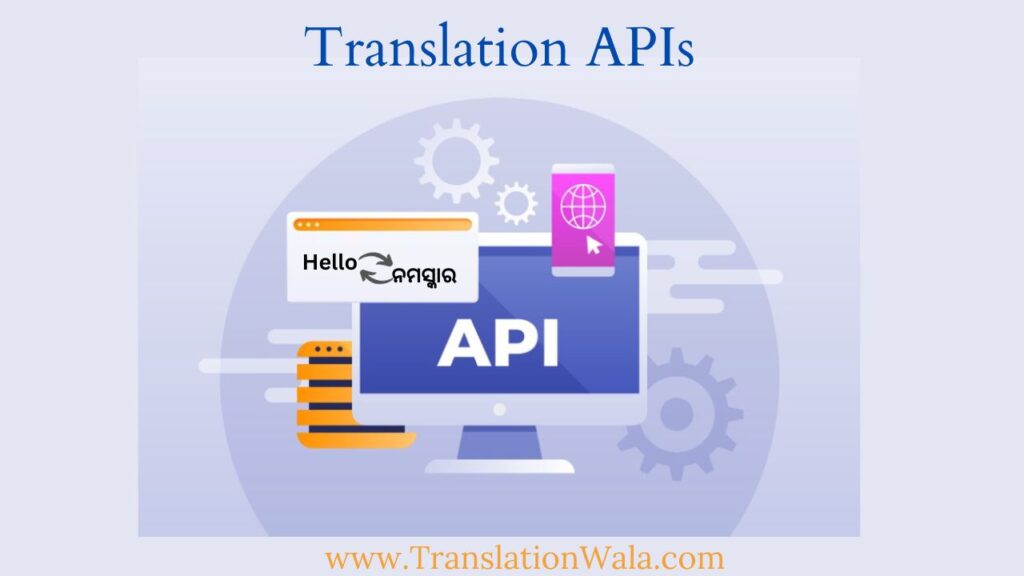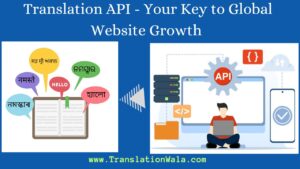Reaching people around the world is no longer a nice-to-have, it’s a must in today’s linked world. But how can you make sure that your digital products work for people from different languages and countries without losing their validity or the user experience? To find the answer, you need to use the power of technology, especially Translation APIs.
No longer do we use translation software that is slow and prone to mistakes. Modern translation APIs let you deliver material in multiple languages with amazing accuracy and subtlety. They work seamlessly with your websites, apps, and other digital platforms. This blog goes deep into the fascinating world of code and culture, looking at how adding Translation APIs can make your digital experiences much better in many ways.
Breaking Down Language Barriers:
Imagine that your website, which is full of useful information, is blocked by a language barrier. A possible customer in Japan wants to learn more about your product but is met with a wall of words that they can’t understand. There are translating APIs that can help bridge the gap between languages and countries. By adding an API, you can change your website’s content directly into different languages, making it available to more people right away.
Beyond Simple Translation:
APIs today do more than just replace words with others. They know cultural background, subtleties, and slang phrases, so they can make sure that translators keep the tone and meaning of the original language. This gives people a more natural and interesting experience, which builds trust and confidence.
Boosting SEO and Visibility:
Search engines give more weight to material that is related to the user’s area and language. If you offer your content in more than one language, it will be much easier for people in other countries to find you in foreign search results. This means that the company will be seen by more people, which will lead to more buyers.
Personalization and Engagement:
Imagine meeting people who visit your website in the language they speak. This small action makes the experience more personal and builds trust and relationship right away. Translation APIs let you change your content on the fly based on what users want, which helps you connect with them more deeply and build better relationships.
Multilingual Marketing and Conversions:
Targeted marketing efforts work better when they are sent in the user’s own language. When you add language APIs to your marketing tools, you can make campaigns that are more culturally relevant and speak directly to your target audience. This will increase conversion rates and return on investment (ROI).
Also Read: Sound to Script: Mastering Transcription Services for Impactful Text

A World of Possibilities:
Translation APIs can be used for a lot more than just websites. Think about robots for customer service, product details, teaching tools, and even social media conversations that can speak more than one language. By using translation to its fullest, you can make your brand fit in with a wide range of cultural settings, creating global links and a truly global presence.
Integrating Translation APIs:
As simple as it sounds, adding language APIs to your current system is actually quite easy. A lot of API companies have panels and developer tools that are easy to use and make the process quick and easy. With very little code, you can open up a world of language options that will make your digital products truly global.
Challenges and Considerations:
There is a lot of promise in translation APIs, but it’s important to be aware of some problems. Careful thought needs to be given to data protection, cultural sensitivity, and ongoing upkeep. On the other hand, these problems can be solved by planning ahead and working with trustworthy API companies.
The Future of Multilingual Experiences:
Translation APIs will be able to do more and more as technology changes. You can expect progress in machine learning and artificial intelligence to make things more accurate, nuanced, and culturally aware. Multilingual exchanges that are smooth and fluid are the way of the future for digital experiences, and translation APIs are at the front of this shift.
Conclusion:
Adding Translation APIs isn’t just a technical feat; it’s a change in the way people think. It’s about accepting differences, seeing things from different points of view, and connecting people who speak different languages. Using the power of code and culture together can help you make digital experiences that connect with people all over the world, promoting growth and changing the future of a truly welcoming online world.



